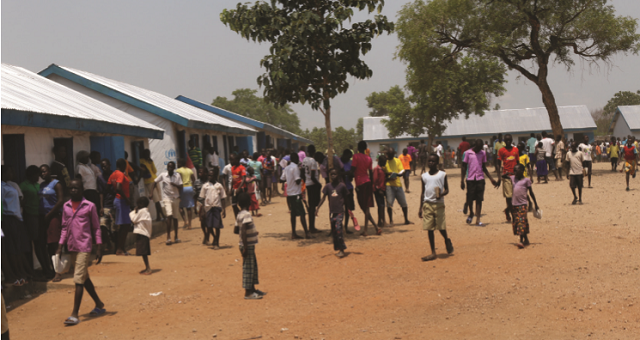
Hosting refugees is expensive
The cost of hosting refugees starts to be felt immediately they cross into the country.
Osman Yusuf Shaban, a team leader at Medicins Sans Frontiers says on arrival, the refugees are vaccinated against polio, measles, and tetanus. They are also given de-worming tablets (Vitamin A) to boost the appetite of mostly the young ones, who are often malnourished. Even the adults suffer from malaria, diarrhea and fever, upper respiratory tract infections, malnutrition, skin diseases and pneumonia. Dickens Otim, a clinical officer working with Medical Teams International, one of UNHCR’s implementing partners at Imvepi says the demand for health services is high.
On arrival at Busia reception centre, a few kilometres from the informal border crossing at Kijaria, the refugees often take their first bath in days if not weeks or months. But trucking in water in some of these settlements sets UNHCR back by $80,000 (Shs 288m) every day. Then they are allocated plots of land to grown their own food. But before the food matures, the UN’s World Food Programme supports them for at least three years depending on vulnerability levels.
Ronald Apeku, a field monitor working with World Vision Uganda in the West Nile region says every month, WFP gives out five key food items at Imvepi; with each registered individual getting 12kg of sorghum, 2.4kg of beans, 0.9litres of cooking oil and 0.15kg of salt.
Uganda’s refugee asylum policy and refugee settlement approach is often cited as an example for other countries around the world but it is being tested by the Sudanese influx.
In June, the UN supported Uganda to host the first ever Refugee Solidarity Summit with the aim of raising up to US$2 billion every year over the next four years in order to ably respond to the looming humanitarian challenge in Uganda. But only US$358 million was raised. To date, humanitarian agencies have received just 21% of the US$674 million needed in 2017 and the UNHCR alone currently has a funding gap of more than US$250 million.
Jovia Echonia, the UNHCR senior protection associate says close to 60% of the one million South Sudanese refugees in Uganda are children and the majority of them are not being taken care of the way the humanitarian agencies would like. Imvepi settlement, for instance, has just a couple of primary schools and one secondary school.
Oliver Lomindet, the headmaster of Longamere Primary School told The Independent on July 31 that his school was built for refugees in the 1960s but fell into disrepair when most of the Sudanese refugees were repatriated in the mid-2000s.
On March 7, this year, the primary school was re-opened and in just a period of four months, Lomindet has registered about 4,201 pupils. Only 12 pupils are Ugandans.
Despite the big number of pupils, the headmaster continues to register more. On the day we visited, Lomindet had just registered 80 new pupils. He told The Independent that as long as they continue trickling in, he will have to register the pupils.
“But the challenge is that as more pupils come in, the number of classrooms does not increase,” Lomindet says. There are only 16 classrooms and 15 teachers, five of whom are women.
Calvin Opio, the settlement manager, Windle Trust Uganda, an NGO that supports refugee education in conjunction with UNHCR and the government of Uganda says there are thousands of children who are still out of school.
Opio told The Independent that Imvepi settlement has 26,000 children that are supposed to be going to primary school but only 10,153 are in school. That means over 15,000 children are out of school.
“The challenge is that certain zones have no schools and where there are schools, the facilities are not enough,” Opio said.
“It is in our plans that we have five more community schools if the UNHCR’s realizes any new resources.” Opio says, the sites have been identified and they are only waiting for funding.
“We only have one secondary school covering the entire settlement called Imvepi Self Help Secondary School which at the moment holds about 781 students and two teachers.”
Opio says there are up to 10,000 children who should be in secondary school in this settlement. Vocational schools and apprenticeship centres where other youths could learn basic survival skills are also missing.
“These are all challenges,” he says.
****
 The Independent Uganda: You get the Truth we Pay the Price
The Independent Uganda: You get the Truth we Pay the Price



